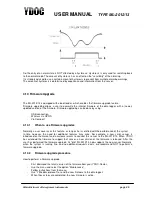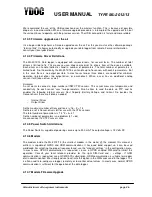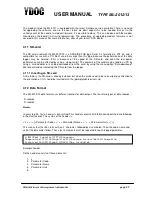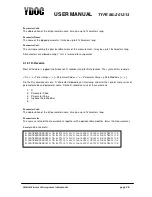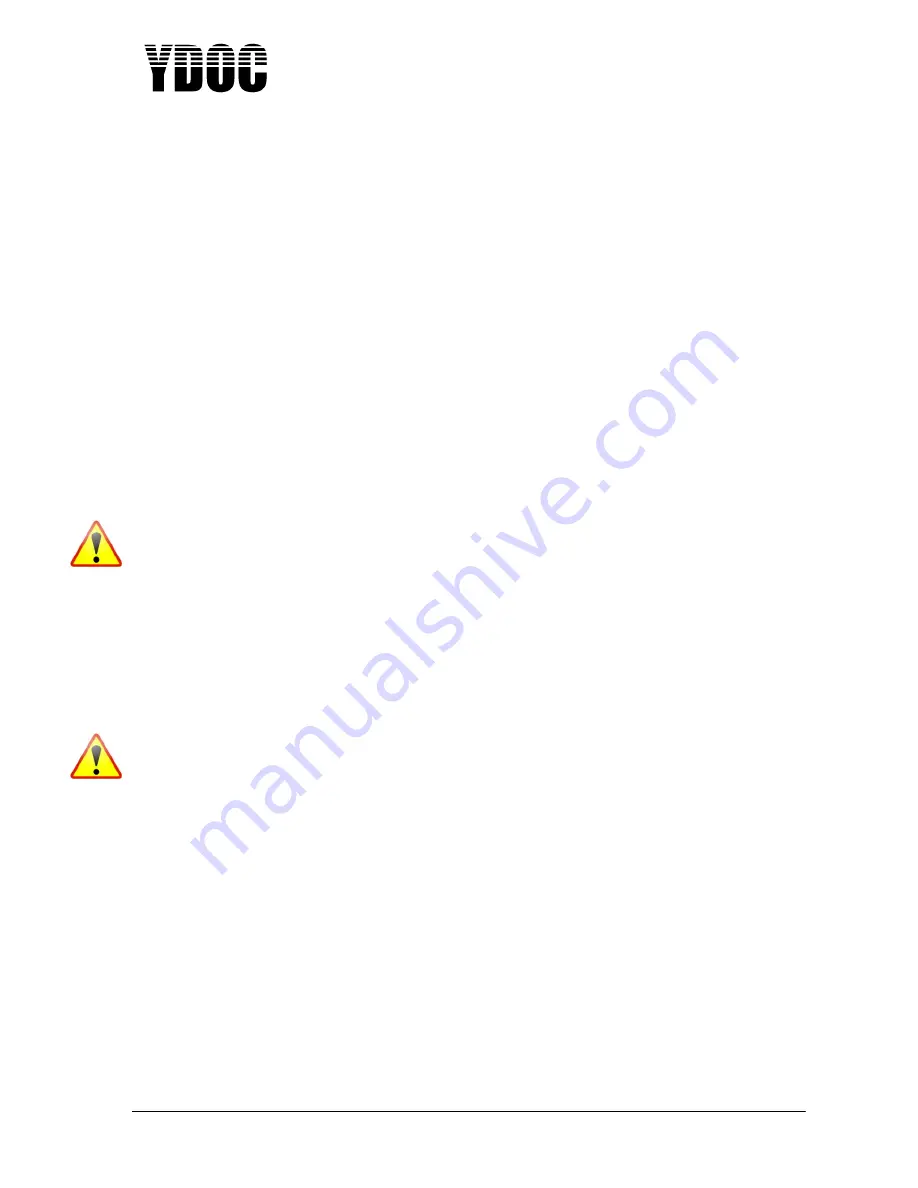
USER MANUAL
TYPE ML-2012/13
Manufacturers of low power instruments
page 32
i.e. when your rain-gauge has a tipping bucket with a size of 0.2 mm rain, it will take five buckets for 1
mm rain. So, in this case the value 5 has to be entered for the “pulses per unit”.
You can reset the counter-value, caused by the previous test, if you like. You can do this by entering zero
into the register via option 6.
If you like to automatically reset the counter-value at midnight, use option 7.
PARAMETERS
There are three parameters for using the digital input:
Counter
This is the most important parameter. It’s a plain counter that counts every single pulse, and keeps on
counting forever (unless you use midnight reset). The maximum count value is:
4294967295 (2^32) It will
reset to 0 when it reaches this count.
The counter is working at all times, even at sleep mode. When the battery is replaced, this value is NOT
lost, and is resuming after replacement of the battery.
Quantity
Quantity is the difference between the actual counter-value and the previous counter-value. So, when
your data-log interval is set to 10 minutes, this parameter shows you the amount of pulses per 10
minutes. Every log-interval, this count is reset to zero.
Important!
So, when you use “Actual values” keep in mind that the parameter “quantity” is a running value. It will
increase during the interval. And what you see at that particular moment is NOT the value that will be
stored on the SD-card. This value could lead you to incorrect assumptions!!!
Rate
The parameter Rate is defined as the time between the last two pulses applied to the data logger, scaled
to one hour. For rain-measurement, the parameter rate can be used for calculating “rain intensity”. It
allows you to differentiate a rain-shower from drizzling rain.
Example:
So, when two pulses, with a delay of 5 seconds between them, are send to the data logger, and every
pulse represents 0.2 mm rain, the rate is: 1 mm per 25 seconds = 144 mm / hour
Important!
So, also this parameter is a “running value”, it extrapolates the rainfall in the next hour , based upon an
actual situation. So keep this in mind.








